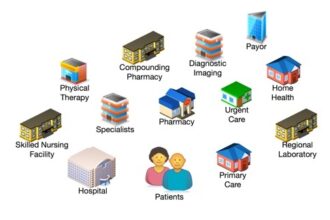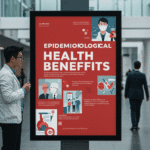Hair loss, or alopecia as it is actually known, can strike at just about any age and may lead to either a gradual or very rapid decrease in the amount of hair someone has. There are numerous reasons why hair loss might occur. Alopecia is a very common condition, affecting roughly half of all men in the United States, and a slightly smaller number of women. And yet, in spite of the prevalence of this condition, we have a relatively poor understanding of what it actually involves, much less how to treat it.
Are we close to a cure for alopecia? Is there any hope for us to eradicate the condition in the future? Let’s take a look at where the science currently stands.
Genetic Vs. Environmental
There is a relatively limited, yet growing, body of evidence that suggests that the genes responsible for baldness may be carried through the mother’s side of the family; this seems to be only one of many factors responsible. Multiple root causes make it harder to tackle these factors effectively and decisively.
In addition to the genetic factors, of which scientists now believe a great many are involved in baldness, there are numerous environmental factors to consider.
For example, hair loss can also be caused by nutritional deficiencies. While nutritional deficiencies sound like an easy problem to address, they can present some difficulties.
For example, those who earn less money are more restricted in the food they can buy. To be able to choose food according to the required mineral content is actually something of a luxury, even though it is easy to take for granted.
Laser-Treatment Approach
One of the more futuristic approaches to addressing hair loss involves the use of micro LEDs (light emitting diodes). This new approach eschews the chemical and mineral options that have been the focus of most treatments developed over the last decade or so. We have known for some time that light can be used to stimulate the growth of hair follicles; it, therefore, has enormous theoretical potential in encouraging hair growth.
Scientists have discovered that particular wavelengths of red light are able to more effectively stimulate the growth of hair follicles than shorter wavelengths, such as green and blue. While laser treatment offers a number of promising benefits (for example, it appears to have a low to non-existent rate of side effects), it doesn’t come cheap.
According to We can answer it the equipment necessary for laser-based hair treatments is very big and very expensive. Not only this but once the machine has been acquired and set up, it still needs to be run by a qualified technician. The energy costs of running such large machines aren’t negligible either.
Future Approaches
One of the most promising current approaches to stimulating hair growth involves the use of a chemical which, until now, was being used to mimic the smell of sandalwood. Scientists discovered serendipitously that the chemical also had the ability to simulate the growth of hair in humans. Although the research is still at a tentative stage, it could be indicative of a fruitful new avenue for treating hair loss.
While we have been getting better at producing chemicals that are capable of encouraging hair growth, many people are understandably apprehensive about putting them in their hair. The substance used in these trials is called Sandalore, and while it might seem odd to look to an odorant (a chemical used to trigger smell receptors) as a means of encouraging hair growth, scientists have found some very promising early successes.
There is also some precedent for looking into these types of chemicals as a potentially very effective hair-loss treatment. Research over the last few decades has shown that certain types of odorant chemicals can trigger growth in hair. The interaction between the odorant and the hair is the same as between an odorant and our noses, except we don’t perceive any kind of smell.
Will We Ever Cure Baldness?
The growing number of hair-loss treatments available means that most people who find themselves suffering from hair loss are able to treat it to some degree. However, there is no guarantee for any one individual that they will be able to treat their baldness. For those who are suffering hair loss because of their diet, they can easily rectify the issue by adjusting their food intake.
For those who are suffering from enzyme deficiencies or chemical imbalances, the topical or oral use of supplements can prove very effective. In the most dramatic cases, transplants, lasers, and other similar solutions are available.
Hair loss is one of those things that we are unlikely to ever eliminate entirely. However, we now have a wide range of options at our disposal for fighting back against hair loss and regaining confidence. If you are losing your hair and want to do something about it, you owe it to yourself to look at your options!








